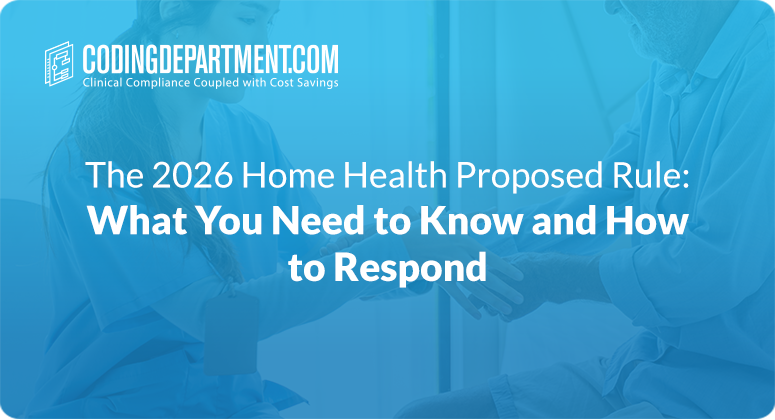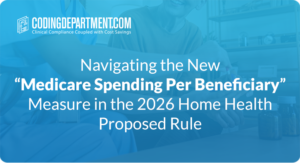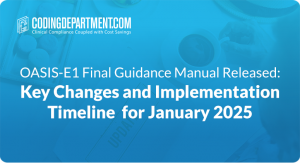On June 30, 2025, the Centers for Medicare & Medicaid Services (CMS) released the much-anticipated 2026 Home Health Proposed Rule, introducing a number of unexpected and significant changes that could have far-reaching impacts across the industry. While some proposals offer a glimpse of positive change, others pose serious threats to the financial stability of home health agencies (HHAs) and the ability to provide essential care.
Here’s a breakdown of the key proposals and what they mean for you.
Proposed Payment Adjustment
For many, the proposed payment reduction is an unwelcome but unsurprising theme since the introduction of the Patient-Driven Groupings Model (PDGM). Over the past three years, proposed rules have consistently included rate cuts, which were then partially softened in the final rule. However, the uncollected amounts have been accumulating in a “clawback” fund, now reaching a staggering $5 billion.
To address this growing deficit, CMS is proposing a temporary 5% reduction for 2026 on top of the permanent adjustment. When you combine both proposed cuts with the projected increase in the Market Basket, the result is a net decrease of approximately 6.4% to our rates in 2026. For HHAs already operating on thin margins, a cut of this magnitude could be devastating, threatening access to care for countless patients.
CMS needs to hear directly from you—the individual home health agencies on the front lines—about how these cuts will impact your ability to provide care. This is a critical time for advocacy. The official publication of the rule in the Federal Register will include easy-to-access links for submitting comments online with just a few clicks. It is now a quick and straightforward process, and your participation is more important than ever. Your state association and the National Alliance for Care at Home are also valuable resources for guidance and tools to help you craft your comments.
Case Mix Weight and LUPA Thresholds
In addition to the rate adjustments, CMS has proposed routine updates to key technical elements that directly influence the overall rate structure. These include recalibrations to the case mix weights, Low Utilization Payment Adjustment (LUPA) thresholds, and the outlier fixed dollar loss calculation. These updates are a standard part of the annual rulemaking process and are designed to ensure payments align with patient needs.
A Positive Shift for Face-to-Face Encounters
Among the unexpected changes, CMS has proposed a significant and positive revision to the face-to-face encounter requirements. Currently, these encounters must be performed by the certifying practitioner, a provider working in direct collaboration, or a facility that referred the patient.
The new proposal, set to begin on January 1, 2026, would allow HHAs to accept a face-to-face encounter from any qualified practitioner. For example, if a patient is referred by their primary care physician but had a recent visit with their cardiologist, that visit’s documentation could be used to satisfy the face-to-face requirement. This change would streamline the process and could significantly improve care coordination and patient access to services.
Major Changes to the HHCAHPS Survey
Many in the industry have hoped for a significant overhaul of the Home Health Consumer Assessment of Healthcare Providers and Systems (HHCAHPS) survey. The proposed rule delivers just that. The survey, which measures patient and caregiver feedback on the quality of care, is set to undergo extensive revisions. For example, the number of questions related to medications would be reduced from six to just two.
Due to these changes, three outcome measures previously derived from the HHCAHPS survey will be removed from the Home Health Value-Based Purchasing (HHVBP) Model. This creates a gap in the number of measures used to calculate the Total Performance Score within the model.
New OASIS-Based Measures and a Shift in Scoring
To fill the gap created by the HHCAHPS changes, CMS is proposing to add new OASIS-based measures to the HHVBP Model starting in 2026. Specifically, they plan to incorporate items M1810, M1820, and M1830 from the functional assessment section of the OASIS. The inclusion of these items is unexpected, as many assumed the “1800-series” items would no longer be a focus with the introduction of “GG” items for discharge function scores. However, CMS has stated that these three items are intended to complement the discharge function score.
With the addition of these new measures, CMS is also proposing a major shift in how measures are weighted within the HHVBP Total Performance Score:
- OASIS-based measures would account for 40%
- Claims-based measures would account for another 40%
- HHCAHPS would be reduced to a 20% weighting
This represents a major restructuring of the HHVBP program.
There are additional proposed changes to the Home Health Quality Reporting Program that will be detailed in an upcoming post.
If you need any support with your home health agency or help understanding the details of the Home Health Proposed Rule, please don’t hesitate to reach out. Your voice matters, and your engagement is critical to shaping the future of our industry.






